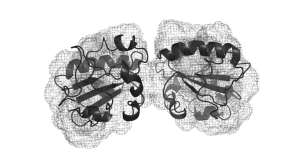
Parasites are organisms that can survive only at the expense of other lifeforms. They tap into their hosts’ metabolic systems, draining them of nutrients and energy. And, as if that was not enough, they also harm their hosts, either by producing toxins or causing cellular damage, disrupting the host's cellular homeostasis, i.e. the equilibrium of cellular processes. The research team led by Prof. Dr Ute Hellmich in the Cluster of Excellence »Balance of the Microverse« is searching for molecular weaknesses in parasites to launch effective defence. Understanding the biochemistry of parasitic organisms enables an understanding of the molecular basis of life itself.
By Marco Körner
Parasites are very diverse, e. g. they can live as multicelullar organisms on the host surface or as microscopic single-cell pathogens infecting the host's bloodstream. »It’s fascinating that these organisms can survive in such different environments,« says Prof. Dr Ute Hellmich, a researcher in the Cluster of Excellence »Balance of the Microverse«.
»A parasite that starts its lifecycle inside a host organism, which could be an insect, like the tsetse fly, can experience entirely different environmental conditions when transferred to a different host, such as a mammal. Such conditions include temperature and pH value,« adds Hellmich, who holds the Professorship for Biostructural Interactions. »For any organism, its enzymes are usually optimized for specific environments. That makes them very vulnerable to variations. The fact that parasitic enzymes can withstand such dramatic changes makes these organisms all the more fascinating.«
Fluorescence microscope image of trypanosomes
Image: Marta BogaczIn her research, Hellmich investigates trypanosomes: single-cell parasites that infect host organisms—such as humans and farm animals—to establish themselves and multiply. »Trypanosomes cause diseases including African sleeping sickness, Chagas disease and leishmaniasis. These diseases are primarily found in tropical and subtropical regions, and often have serious health impacts,« describes Hellmich.
They are also the cause of social stigma, which presents an additional burden and makes life even harder for those affected. Furthermore, they have also have an economic component due to their impact on livestock. »We want to understand how these parasites adapt to different environments and handle changes in order to identify weak points in their biochemistry, which can then be targeted in the development of new therapeutics.« However, her main fascination is to understand the biochemistry underlying life itself.
It’s all about the details
»Although life is incredibly diverse on our planet, on the molecular level it is based in similar biochemical mechanisms,« says Hellmich, outlining her fascination with her subject. »This is exactly why it isn’t easy to develop medications that are effective against the pathogen without harming the host.« With this in mind, Hellmich and her team are searching for biomolecules that occur in the pathogen but not in the host.
The enzyme tryparedoxin, which plays a key role in the redox metabolism of trypanosomes, is one such molecule. »Tryparedoxin effectively acts as the ›central cog‹ in the metabolic system of these parasites,« explains Hellmich. »It’s responsible for repairing cell structures and supporting essential processes that enable parasites to survive and reproduce.«
Structure of two tryparedoxin proteins bound together by an inhibitor
Image: Ute HellmichDisease often carries stigma
In an effort to stop this enzyme from working and thereby eliminate the pathogen, Ute Hellmich and her team are developing »molecular glues«—compounds that attach to specific points on the enzyme and cause two tryparedoxin molecules to stick together, rendering them inactive. »Of course, this approach could also be used in other areas of cellular biology, « says Ute Hellmich.
Communicating their work in a comprehensible manner is a priority for the researchers, especially on this topic—both in terms of their basic research work and in relation to the societal context. »People affected by diseases often experience stigma in addition to economic hardship, because parasitic diseases can lead to disfigurements.«
The implications range from the diseases for which medications are actually developed, and who gains access to such treatments, to the wholesale disregard for certain diseases that affect millions of people—but not in the Global North. »We strive to keep this context in mind, in addition to our biochemical research, and convey these facts to our students and the wider public,« says Hellmich.
Nevertheless, the foremost objective of this work is to understand the fundamentals of life at the molecular level. »Researching the biochemical processes and molecular dynamics of enzymes like tryparedoxin not only opens the door to potential treatments for certain diseases, but also helps to answer fundamental questions about the principles of life,« explains Hellmich. While directly furthering our understanding of parasites, her research findings should also enhance our knowledge of evolutionary diversity and the adaptability of life in diverse and changing environments.
Cell culture flasks at a laboratory workstation
Image: Anna Schroll07743 Jena Google Maps site planExternal link


